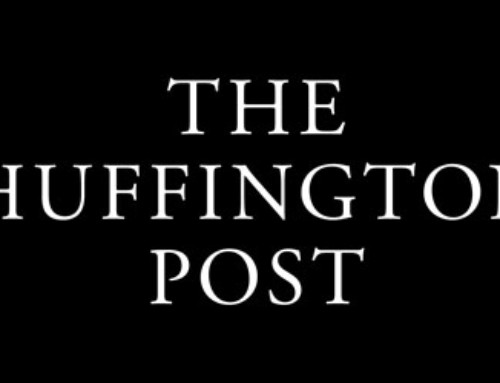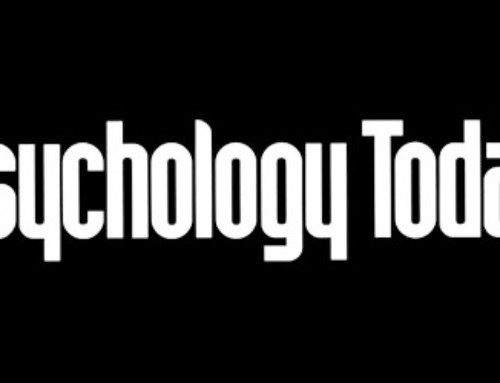By Russell C. Smith and Michael Foster
Poet Gary Lemons has the kind of insight that puts him ahead of the curve from his contemporaries. His former poetry books “Bristol Bay” and “Fresh Horses” were prime examples of lyric poetry accompanied by a unique voice. His current collection of poems, “Snake,” imagines a post-apocalypse Earth long after the extinction of the human race where a character that embodies all of the feelings, thoughts and emotions of our entire civilization when it no longer exists.
You mention “intelligence without risk is knowledge.” There has been plenty of debate suggesting artificial intelligence will eventually need to move within a Darwinian environment of risk and survival to grow more sophisticated. Humanity became intelligent due to our physical and environmental constraints. What is Snake dependent on for its survival?
All intelligence—whether organic or artificial is an evaluative process in Time. And Time is a post Big Bang invention. Once you assign a point of origin for things you introduce Time. Time doesn’t exist in infinity because in infinity there is no beginning and no end. Big Bang established the point when all the beautiful forms came into being interestingly enough composed of the same material. Here is the starting place to measure entropy or the movement of systems toward unsustainable complexity or higher states of disorder. Which is another way of describing Time. In a temporal existence intelligence—whether artificial or not—is headed along with everything else into the last round up on a horse exhausted from carrying its own weight.
The less complex a system is then you would think the more intelligent it is. The more entropy resistant. Take a rock. It doesn’t covet the protein stored in other forms. It doesn’t need increasingly more complex weapons to acquire or defend space. An alien intelligence is locked inside of it that is uncommunicative to our species. The point being all form has an intelligence and whether its body is organic and needs food, water and air or whether its body is metal or plastic or molecular and needs temperature or light or power to exist is a very slender distinction.
Accelerating into an increasingly baroque entanglement with improbability seems to be the measurement of intelligence—this is a love affair with death—with the end of Time—because entropy always leads to system collapse. Snake is immortal—no longer subject to Time’s arrow—he’s pre Big Bang—so he’s no longer intelligent—he’s no longer attempting to order his reality—he’s simply being Forever embodied. Meaning intelligence from one perspective can be viewed as the sad desire to build a better version of something that’s already perfect.
One last Snake thought—intelligence is an arbitrary or sensory based assignment of value to a deconstructive process. This has a very male flavor. But you’ll notice I often refer to Snake as both “he” and “she” as well as “it.” Snake’s immortal—has no gender but will speak in both voices in the poems. Anyway—intelligence as we define it—as it’s mostly always been defined—is a very patriarchal concept—all about imposing order, comprehension of potentials—about building one thing to destroy another—it’s the army of the male mind organized into units whose main purpose is to go forth and multiply. It leaves little room for what in some cultures is called feminine energy or the matriarchy where value is placed more on intuition, inspiration and a fearless willingness to embrace disorder as the truth of temporal existence.
Douglas Hofstadter’s recent book “Surfaces and Essences: Analogy as the Fuel and Fire of Thinking” puts forth a unique perspective on cognition and thought, in which human beings form intelligence by creating analogies to define our existence. Snake is full of hyperlinked analogies, almost a flip side, or invert to our own consciousness. In some ways, he exists between those implied surfaces and essences…
Essentially I think the lines between things are almost always invisible. And that seeing them is what brings true compassion and gentleness and love into the world. images and inspiration and intuition—which are building blocks of analogous thought—are the bridges between coherence and incoherence—and since most art—maybe even most of existence is incoherent—meaning it isn’t accessible without a parachute or safety net—the degree to which we are willing to look beyond surfaces at the subtle carpentry of existence is a measure of our true willingness to build communities—neighborhoods—countries—families. This inquiry into the connection between things expressed as analogy is my idea of the sacred. Seeing each other—without looking away and with a willingness to look beyond the evident damage living brings.
In the Bible, Adam and Eve are tempted by a snake to chew on an Apple and are subsequently removed from the Garden of Eden. Is there a subtle (or not so subtle) irony that humanity seems to being and end with a snake?
There’s a poem in Snake called “Snake Lights a Seegar” that address this—essentially Snake finds Adam and Eve—or their mythological shadows—in the Garden of Eden—alone, abandoned—forsaken—and cares for them—because no one else will. Snake becomes the care giver for the first humans. Remember—because Snake is immortal she can travel to events stored anywhere in any reality—even in the perhaps fictitious realities of myth.
The Ouroboros figure is probably one of our oldest remembered symbols and is important to the poems. So yes—Snake bites his own tail and rolls the universe inside the loop this makes and takes the occupants for a ride.
The concept of “dreaming” behind Snake… it seems like another dimension in which the character travels. Ever since Christopher Nolan’s “Inception” the masses seem more interested in the science behind our capacity to dream. Is Snake asleep, awake, daydreaming, or traveling through other dimensions?
The idea of Dreaming in Snake is a like river. There’s a flood upstream—a storm with thunder and lightning and torrential rain churning the narrative flow so it over runs its banks—becomes numerous channels that reform at some point back into a single river. Downstream no one is aware this dangerous out of control event is approaching. Especially the poet in the way of it.
The expression Dreaming Way and the word Dream derive their meaning—or corporeality—from the first poem—Snake. But this is only a starting place. It’s like a runner lining up for a race seeing all the other runners are shadows and those shadows are renderings of itself. What I mean by this is the original poem came from a nighttime dream—morphed into substance out of the reality described in that dream—but quickly turned into landscape in the form of metaphor and images. I became a witness observing and reporting back—in the form of new poems and now new books—Snake’s noetic slithering in a bloody but unified field.
That part of it is little different than the way all artists work. Suspending their own reality in order to listen or see carefully enough to describe another world. What was different for me from other books I’ve written—and I’ll talk a little more about this later if you’d like—is in Snake I really didn’t know what was around the next curve. Until we got there. It was a surrendering I’ve never experienced in my work before. Humbling—exciting—in the end terrifying.
At any rate—Dreaming then Is consciously entering unoccupied space only to find you’re there. Like crawling through a series of tunnels that open up on a well lit infinitely large room where you are greeted by your resemblance. Sort of like a starship. Once it leaves the known area of space it’s really dreaming the worlds in front of it—it’s entering a reality that only exists because the ship enters it. This is how Snake evokes dreaming—an entered unknown reality—not a destination but a passageway—that leads through an organic prism of forms and substance back into original awareness. Which is the summary of lost light. Which is how Snake moves outside of time.
To discuss these things authentically I feel obligated to create a new language or at least a new way to gather words together into meaning. Which is what every poem is—a dream come to expression on an empty page.
Snake is similar to William Basinski’s “Disintegration Loops” in which the power of the art is greatly enhanced by an audience, and becomes part of a community discussion. Is this why you participate in a lot of book readings?
Red Hen received a grant to take Snake on tour through 13 cities in California—it was a 35-day driving tour—a real road trip through all kinds of small towns on the far eastern as well as western side of the state. One day in Humboldt State—the next on the Piute/Shoshone Reservation in Bishop.
Some of the most powerful writing I’ve heard came from this experience. The possibilities are literally unlimited for self-discovery and transformation through sharing poetry. Without sounding too over the top about it—I’ve witnessed as both a teacher and student the profound personal effects of speaking your truth. All of us—at almost every age—have a story or stories we’ve kept to ourselves—our personal version of reality as it travels from experience into memory.
And most of us are naturally shy about sharing it. Not because we’re ashamed of it though sometimes that’s part of it as well—but most often because we’re scared or think no one will care about it—so it hides there—distorts there—and when a safe place is co-created—like a workshop—where suddenly it’s possible to free this story—huge movements in awareness can and do occur. This is the beauty—the sacred nature—of poetry. And all aspects of storytelling. At this level it connects people across ages and genders and races—and it is a wonderful way to build and strengthen and transform ourselves and consequently our communities and families.
I love reading my work and even more having a dialogue with those who come to listen or share. Some of my best memories of the tour happened after the reading and we sat around talking. Very cool!
You and your publisher, Red Hen Press, are moving forward with two more Snake books, creating a trilogy. What does part two and three have in store for your readers?
Snake part 2, tentatively subtitled Lost Voices is close to complete. Kate Gale and Mark Cull—the Publisher and Editor of Red Hen Press—are working on the production schedule right now and my website and Facebook page as well as Red Hen’s website will have solid dates as soon as they’re available. Snake part 3, un-subtitled so far is close to halfway finished and will follow Lost Voices.
As mentioned above—the books are an organic process changing like a body changes in time. So I’m not real sure where this is going until the books are done. Snake likely knows but she’s not giving much away. I’m both a passenger in the process and the co-pilot, so my responsibilities include making sure the landing is safe. Toward that end it’s possible to say that the next two books in the trilogy will address the shifting of forms—the disappeared collective from the first book—back and forth through dreams into substance once again. I suspect the realization will come that no matter where consciousness is found—and we’ve seen so little of its map—it’s indistinguishable from dreams. And that all organic life is as eternal as the energy it’s composed of. Snake talks about yoga in the first book. I think the idea is that everything’s alive somewhere always. Always.




